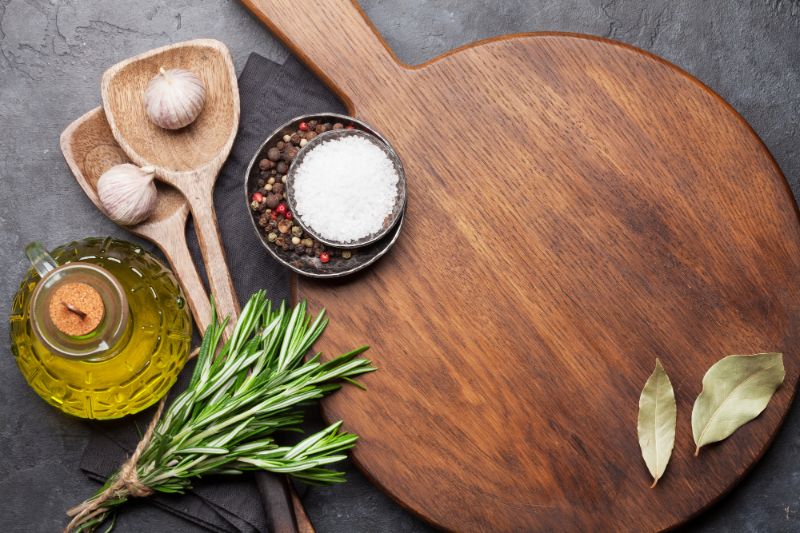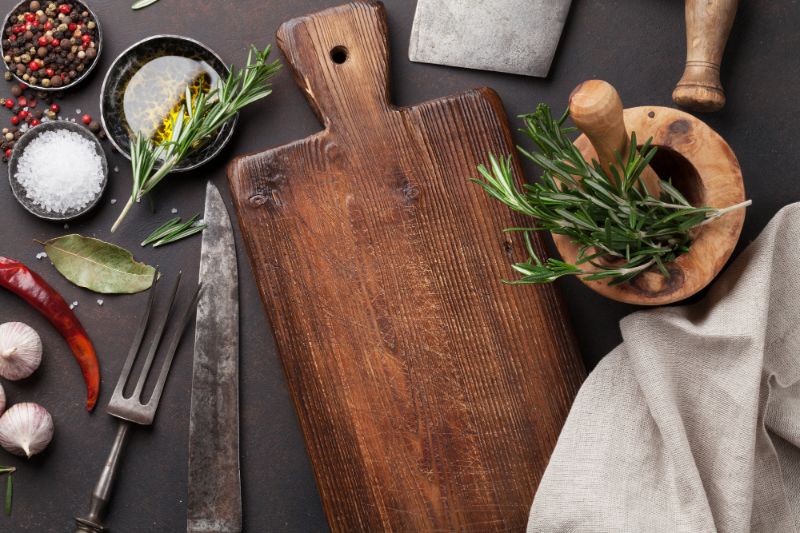A sturdy cutting board is the unsung hero of every kitchen, enduring countless chops, slices, and dice to aid in our culinary adventures. However, despite their robust appearance, cutting boards require proper care and maintenance to ensure their longevity. Neglecting your cutting board can lead to wear, stains, and even bacterial growth, jeopardizing both its durability and your health.

Fortunately, there are several practical and easy-to-implement strategies to make your cutting board last for years, preserving its functionality and appearance. In this article, we will delve into key aspects of cutting board maintenance: cleaning and sanitizing, proper storage, and periodic maintenance techniques.
Clean and Sanitize Regularly: The Foundation of Longevity
One of the fundamental aspects of preserving your cutting board is consistent cleaning and sanitization. After each use, it is crucial to wash the board thoroughly with hot, soapy water, ensuring that all food particles and residues are removed. Using a brush or sponge can aid in reaching crevices and corners, leaving no room for bacteria to thrive.
Additionally, for an extra layer of cleanliness, consider using a mixture of vinegar and water, a natural disinfectant, to sanitize the board. Simply spray the solution, let it sit for a few minutes, and then rinse thoroughly. For stubborn stains and odors, a paste made of baking soda and water can work wonders. Scrub the affected area gently, then rinse, and voila! Your cutting board will be as good as new, ready for your next culinary masterpiece.
Proper Storage: A Shield Against Wear and Tear
How you store your cutting board significantly influences its lifespan. Avoid exposing it to extreme temperatures or direct sunlight, as these factors can cause the board to warp or crack over time. Instead, store your cutting board in a cool, dry place, away from heat sources like stoves and ovens.
To prevent moisture retention, which can lead to bacterial growth and unpleasant odors, store your cutting board vertically, allowing both sides to air dry thoroughly. Additionally, investing in a wooden cutting board oil or mineral oil can be a game-changer. Applying a thin coat of oil to your cutting board every few weeks creates a protective barrier, repelling water and preventing the board from drying out. This simple step can significantly extend the life of your cutting board, making it a worthwhile investment for any home cook.
Periodic Maintenance: Prolonging the Lifespan
In addition to regular cleaning and proper storage, periodic maintenance is essential to ensure your cutting board’s longevity. Over time, your board may develop scratches and rough patches, diminishing its smooth surface. To address this, consider sanding your cutting board with fine-grit sandpaper, following the direction of the wood grain. This process helps remove imperfections and restores the board’s smooth texture. After sanding, apply a generous coat of mineral oil to nourish the wood and seal the surface, providing extra protection against moisture and wear.
Furthermore, be mindful of the type of knives you use on your cutting board. Using sharp knives is not only safer but also reduces the likelihood of causing deep grooves in the wood. Regularly inspect your cutting board for signs of wear, and when necessary, repeat the sanding and oiling process to keep it in optimal condition. With these proactive measures, your cutting board will continue to serve you faithfully, enhancing your culinary endeavors for years to come.
Choosing the Right Cutting Board Oil: Enhancing Durability
Selecting the appropriate cutting board oil is paramount to ensuring the longevity of your culinary companion. Not all oils are created equal, and using the right one can make a significant difference. Opt for mineral oil, which is food-safe and odorless, making it an ideal choice for cutting board maintenance. Applying a high-quality cutting board oil not only rejuvenates the wood but also creates a protective barrier, preventing moisture from seeping in and bacteria from thriving. Regular oiling keeps the wood supple and resilient, enhancing its natural beauty while ensuring long-lasting durability.
When choosing a cutting board oil, read the manufacturer’s instructions carefully and follow the recommended application frequency. By consistently using the right cutting board oil, you can amplify the effectiveness of your maintenance routine, ensuring that your cutting board remains in impeccable condition for years to come.
Choosing the Right Materials: The Foundation of Longevity
The material of your cutting board plays a pivotal role in its durability. While wooden cutting boards are popular for their aesthetic appeal and natural antibacterial properties, they require specific care to maintain their longevity. Hardwoods like maple and walnut are excellent choices due to their durability and resistance to wear.
Avoid softwoods like pine, as they are prone to scratches and dents, diminishing the lifespan of your cutting board. Alternatively, plastic cutting boards are affordable and dishwasher-safe, but they tend to develop deep grooves over time, providing a breeding ground for bacteria.
If you prefer plastic, opt for high-density polyethylene (HDPE) boards, which are more resistant to wear and knife marks. Regardless of the material you choose, proper care, regular cleaning, and oiling are essential to ensure your cutting board stands the test of time.

Mindful Cutting Techniques: Preserving Both Board and Knife
Proper cutting techniques not only enhance your culinary skills but also contribute to the longevity of your cutting board and knives. Avoid using excessive force while chopping, as it can lead to deep gashes in the board. Instead, let the sharpness of your knife do the work. Additionally, rotate and flip your cutting board periodically to distribute wear evenly across its surface. This simple action prevents the board from developing lopsided grooves and ensures uniform longevity.
Furthermore, invest in high-quality, sharp knives. Dull knives not only make chopping more laborious but also exert unnecessary pressure on the cutting board, causing it to wear out faster. Regularly sharpen your knives to maintain their edge, making your cutting tasks more efficient and preserving both your board and knife for years of use.
Environmental Impact: Sustainable Choices for Long-Term Use
Considering the environmental impact of your kitchen tools is crucial. Opting for a sustainable cutting board made from reclaimed or responsibly sourced wood promotes the conservation of forests and reduces your carbon footprint. Additionally, choosing a durable cutting board that lasts for years prevents the need for frequent replacements, reducing the overall demand for new materials.
When your cutting board eventually reaches the end of its lifespan, consider recycling or repurposing it instead of sending it to the landfill. By making mindful choices, you not only contribute to environmental conservation but also ensure the long-term sustainability of your kitchen essentials, aligning your culinary practices with a greener, more eco-friendly lifestyle.
Caring for your cutting board is not just a matter of maintenance; it’s a testament to the respect and appreciation you have for your kitchen tools and the food you prepare. By following these comprehensive strategies, from choosing the right materials and employing mindful cutting techniques to selecting the appropriate cutting board oil and considering the environmental impact, you can ensure the longevity of this essential kitchen item. A well-maintained cutting board not only enhances your cooking experience but also contributes to a cleaner, safer, and more sustainable kitchen environment.
So, invest the time and effort into nurturing your cutting board, and it will continue to be your reliable partner in the culinary adventures that await, adding flavor and flair to your meals for years to come.
